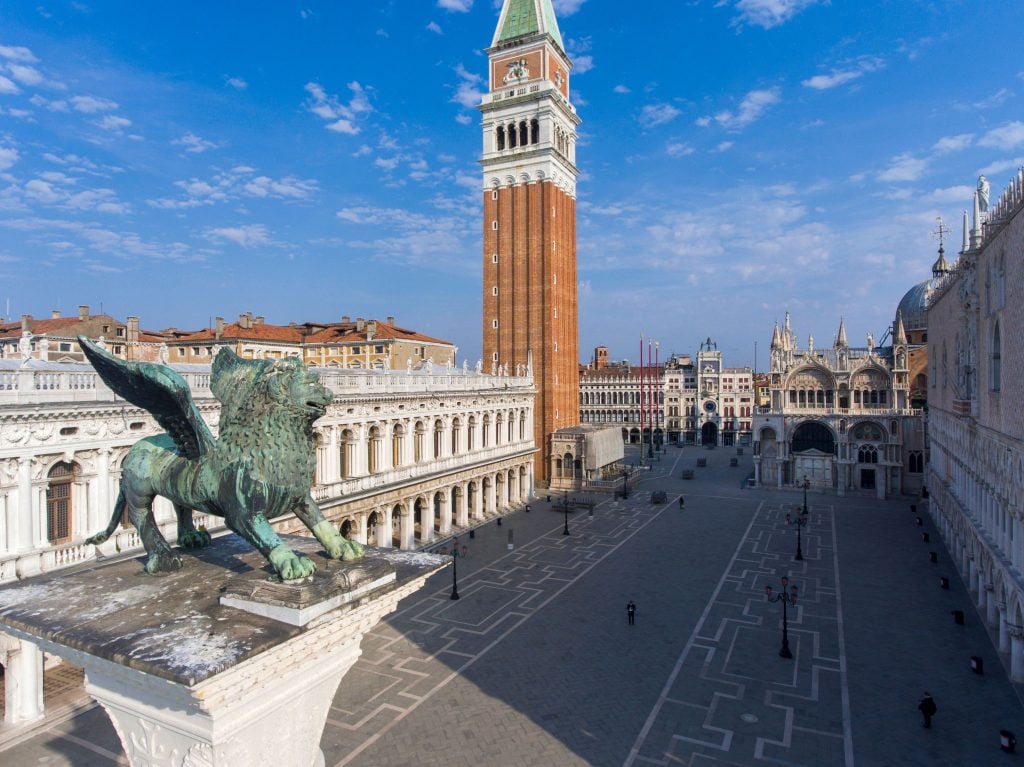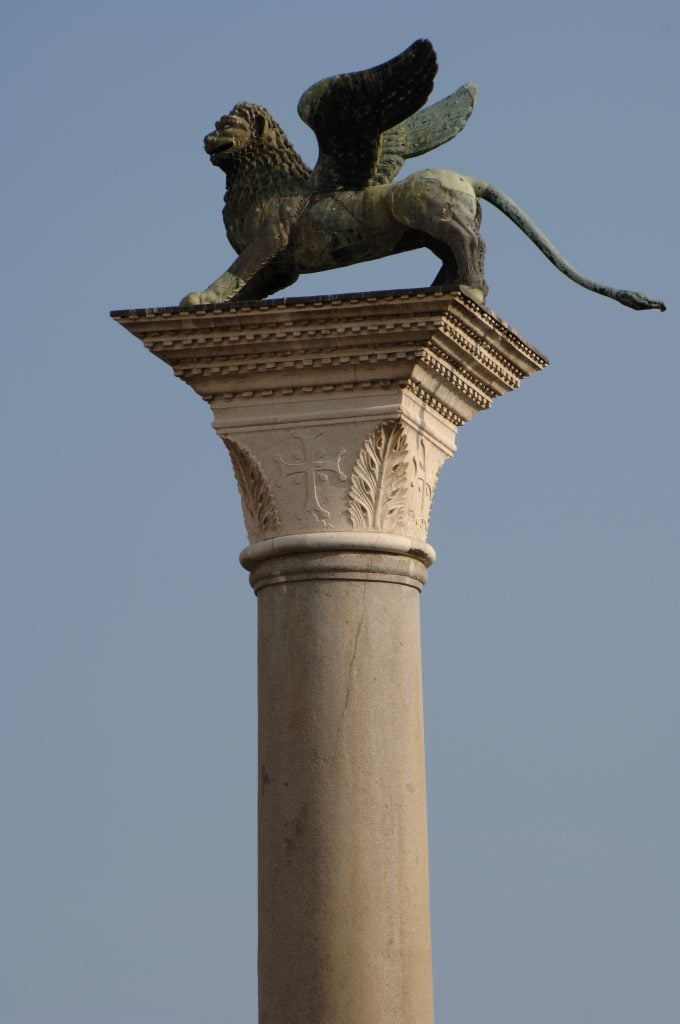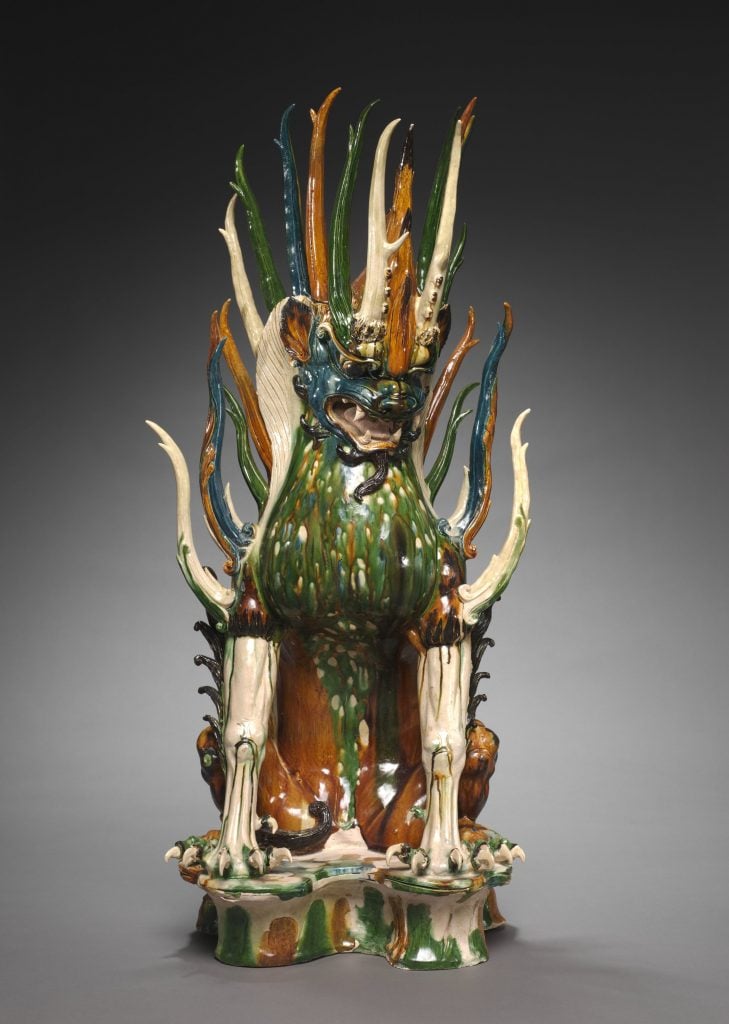Archaeology & History
Was Venice’s Famed Winged Lion Statue Actually Made in China?
A new chemical study reveals that the sculpture originates from copper ore deposits in China.

When Marco Polo returned to Venice from a place he called Catai in 1295, he brought back sublime tales of another world. Polo’s Book of the Marvels of the World told of paper money, a burning black stone (coal), precious spices (pepper, nutmeg, cloves), and Kublai Khan’s sumptuous palace at Xanadu.
Contemporaries questioned the veracity of Polo’s accounts, a position echoed, for different reasons, by modern scholars. Still, Polo endures as a vital point of contact between Europe and dynastic China. New research conducted around the 700th anniversary of the Venetian explorer’s death, however, suggests fruitful exchange between the maritime city and China predated Polo.
One symbol of this connection is the bronze Lion of Venice sculpture that stands atop one of the two columns in St. Mark’s Square. Fresh analysis from researchers at the University of Padua, which boasts a world-leading archive of lead isotopes, has connected the statue to Chinese copper ore deposits in the lower Yangzi River, an area with a mining history dating back 3,000 years to the late Shang dynasty.
It was long known that Venice’s sculpture, a cross of a lion and a griffin that symbolizes Saint Mark the Evangelist, originated elsewhere, but previous research had suggested a Near Eastern Anatolian source between roughly the 4th and 3rd centuries B.C.E.

The Lion of Venice in the Piazzetta, Venice, Italy. Photo: Prisma/UIG/Getty Images.
Lead researcher, Massimo Vidale, was never convinced by thinking that placed the sculpture in the Hellenistic world.
“I always had the impression that the lion was a Chinese hybrid, a deeply manipulated Chinese statue,” Vidale said via email. “Now, we have solved for good, a long-inherited archaeological riddle and the stylistic and chemical data are in perfect agreement with the hypothesis that the Venice Lion was made in China.”
The winged lion became the official symbol of Venice between 1261 and 1264 and though it is unknown precisely when the statue was mounted in St. Mark’s Square, academics are certain that it predated Polo’s return. In the wake of the chemical analysis, historians have drawn comparisons between the bronze lion and Tang dynasty (618 to 907 C.E.) tomb guardians.

Unknown, Tomb Guardian with Animal Head (Tang dynasty ca. 700). Photo: courtesy the Cleveland Museum of Art.
While much of Tang dynasty bronze record has been melted down or destroyed, porcelain artifacts evidence strong similarities in nostrils, teeth, facial expression, and hair patterning. Further proof arrives through the holes in the sculpture’s head, which researchers believe would have once held horns, and ears which have been rounded off. The sculpture, which is known to have arrived in parts and reassembled, was essentially modified to look more lion-like.
In Vidale’s view, the next step is for historians to systematically study all of the Chinese pre-Ming dynasty pottery that have been found in Venice. As evidenced by late 13th-century porcelain found in the city, there were pre-Polo trade routes that ran from southern China, through the port cities of Sumatra, and along the west coast of India, before heading overland across modern day Iran and Turkey towards Western Europe.
Pottery would have travelled alongside other commodities and further research would recast the role Venetian tradesmen and explorers played in the city’s development long before Marco Polo’s book was written. “It shows the unprejudiced nature of their view of the world,” Vidale said. “A global context in which a frightening monster guardian could be transformed in the holy image of one of the four apostles.”
The ideal course of action, Vidale said, would be to take the statue down for a thorough examination. Though, he admitted, that is “wishful thinking.”





